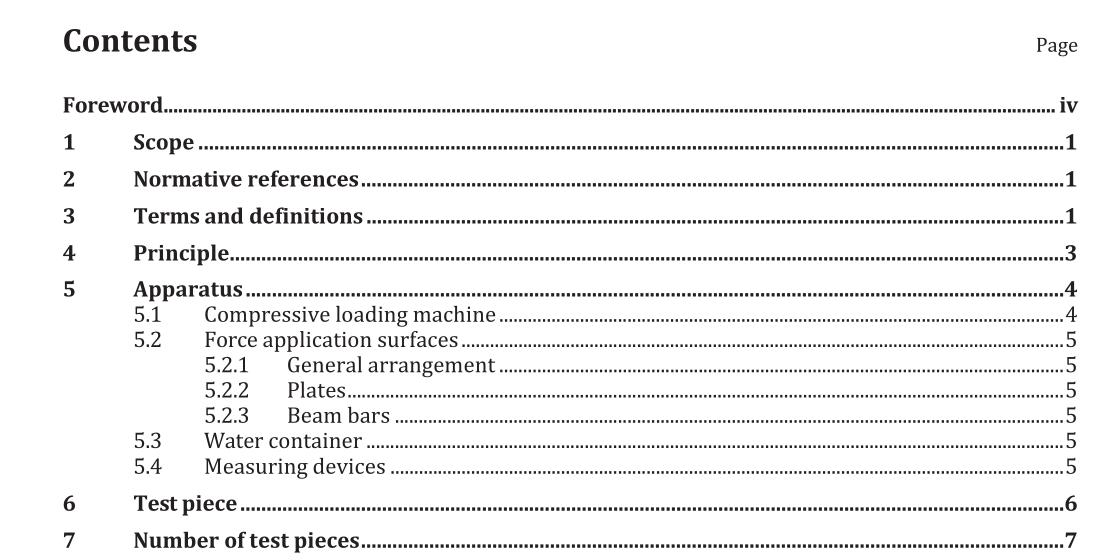BS ISO 10471:2018 pdf download.Glass-reinforced thermosetting plastics (GRP) pipes — Determination of the long-term ultimate bending strain and the long-term ultimate relative ring deflection under wet conditions
1 Scope
This document specifies a method for determining by extrapolation the long-term ultimate ring bending strain and the calculation of the long-term ultimate relative ring deflection of glass-reinforced thermosetting plastics (GRP) pipes, under wet conditions.
Two methods of loading are given, one using plates the other beam bars.
2 Normative references
The following documents are referred to in the text in such a way that some or all of their content constitutes requirements of this document. For dated references, only the edition cited applies. For undated references, the latest edition of the referenced document (including any amendments) applies.
ISO 3126, Plastics piping systems — Plastics components — Determination of dimensions
ISO 7685, Plastics piping systems — Glass-reinforced thermosetting plastics (GRP) pipes — Determination of initial specific ring stiffness
ISO 10928, Plastics piping systems — Glass-reinforced thermosetting plastics (GRP) pipes and fittings —Methods for regression analysis and their use
3 Terms and definitions
For the purposes of this document, the following terms and definitions apply.
ISO and IEC maintain terminological databases for use in standardization at the following addresses:
— IEC Electropedia: available at http://www.electropedia.org/
— ISO Online browsing platform: available at https://www.iso.org/obp
3.1 vertical compressive force
F
vertical force, applied to a horizontal pipe to cause a vertical deflection
Note 1 to entry: Vertical compressive force is expressed in newtons.
4 Principle
Each of several cut lengths of pipe is supported horizontally and loaded throughout its length to compress it diametrically to achieve a desired level of strain. The force application surfaces are either bearing plates or beam bars. The pipe is immersed in water at a given temperature for a period of time during which the force remains constant and the increasing vertical deflection is measured at intervals until failure (see 3.9) occurs. The relative vertical deflection at failure [ultimate relative vertical deflection, y u, wet /d m (see 3.6)] is converted into a bending strain at failure (ultimate bending strain, ε u, wet , in percent), either calculated using Formula (1) or determined from a strain-deflection calibration curve (see 10.3).
The strain may also be measured directly by the use of waterproofed strain gauges. The following strain calculations assume that the neutral axis is at the pipe wall midpoint. For pipe wall constructions that produce an altered neutral axis position, it is necessary to evaluate results by substituting 2ȳ for the wall thickness e where ȳ is the distance from the appropriate pipe surface to the neutral axis. The neutral axis position shall be determined using an appropriate method, e.g. calculation or use of strain gauge couples.
BS ISO 10471:2018 pdf download
